There are several things beyond color and pattern that are important
when choosing a home decorating fabric, no matter what the project.
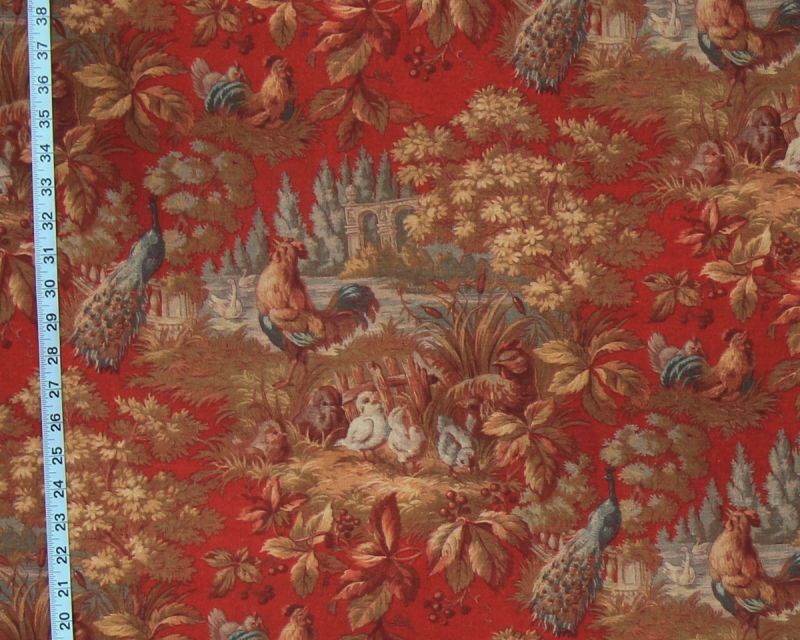
Two of these are the scale of the pattern and the placement of the design elements on the fabric.
Fabric companies have very specific set ups for patterns. Some seem to be random, some are what I think of as stacked, and some are staggered. The pattern set up defines how a fabric can be used to its best advantage.
The easiest fabric to use is an all over pattern, such as the pale blue starfish fabric. Even though there is a pattern repeat, it is almost indiscernible. So, there is vertually very little fabric waste, no matter what the application is.
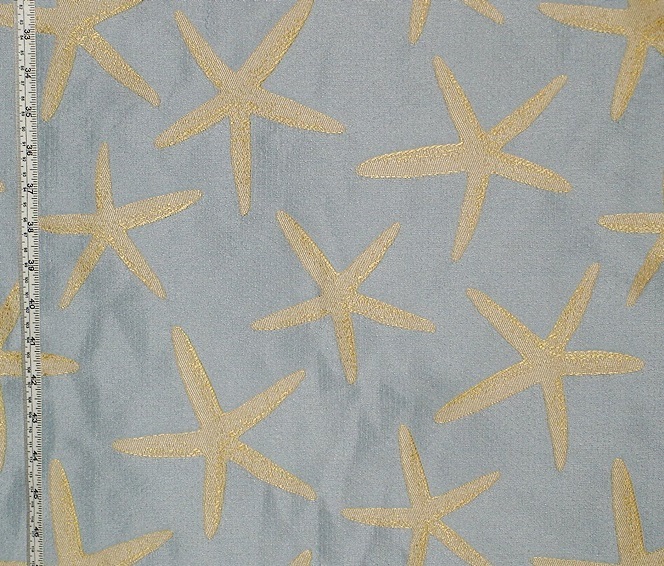
The stripe, can also be a relatively easy pattern to use. The amount of waste will be dictated by the number of colors used in the fabric, and the repeat. The Clarence House Fabric Concerto with its wide stripes would make wonderful curtains, but some projects might require quite a lot of fabric for pattern matching.
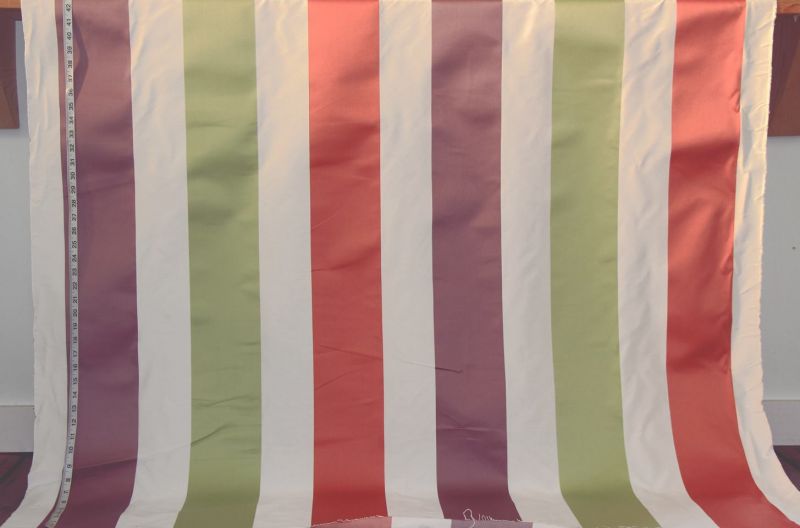
Something like the Southwestern Serape Fabric with its thinner stripes, and tighter repeat would have less fabric waste than the Concerto with its very wide stripe, and very large repeat.
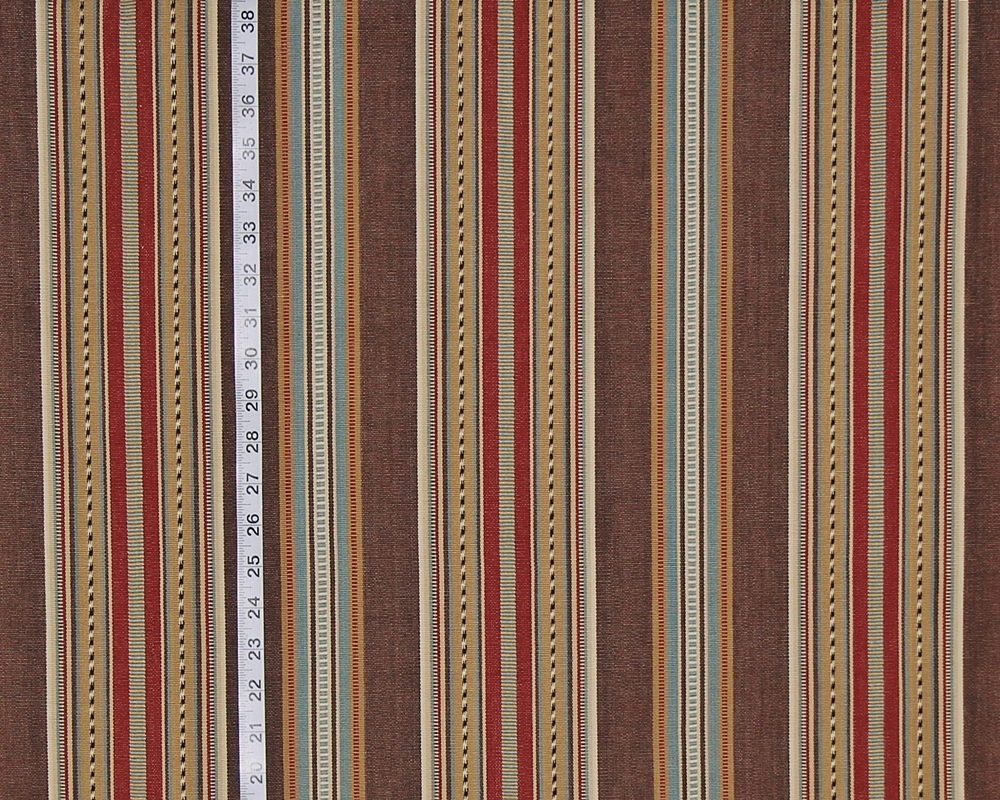
The serape fabric has two disctinct groups of stripes. One thing to think about with stripes like these and it also applies to true plaids, is which color group does one want to emphasize? The color group with the blue is more subtle than that with the red.
The aqua blue seashell has a very large scale and appears random, but is not. There is no horizontal repeat, but there is a vertical one. If one looks at the left and and right hand edges, that is the full repeat. If one looks at the round scallop shells, and go up the fabric, one can see the vertical repeat.
This type of pattern set up as both good and bad attributes. For curtains, this is an easy pattern to make use of. But, if one is doing a sofa with three cushions which need to match, there will be considerable waste. If one wants to do dining chair seats one can chose two different parts of the pattern, and use each on more than one chair, giving some variety, but still maintaining a cohesive look.
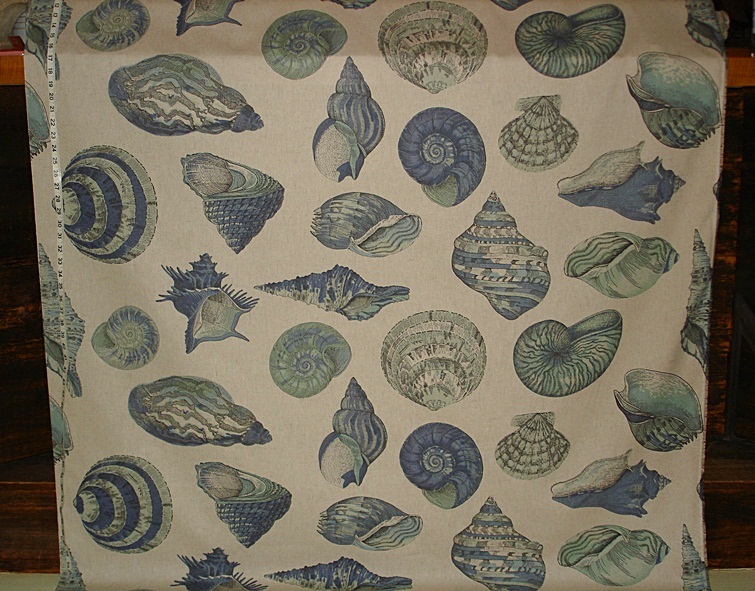
The green coral fabric with seashells and antique urns has a totally different set up, but again, is difficult to use. This has two different design elements which are set in alternating rows.
Only the two different urns in the center of the fabric have all of the design elements. The urns near the fabric edges are missing parts of the design. And, they are so close to the edges of that those would be very difficult to use centered on a chair or cushion. The other problem is, the tops of the urns are almost on the same level as the bottom of the in the rows above and below them, making it almost impossible to get more than one urn per repeat.
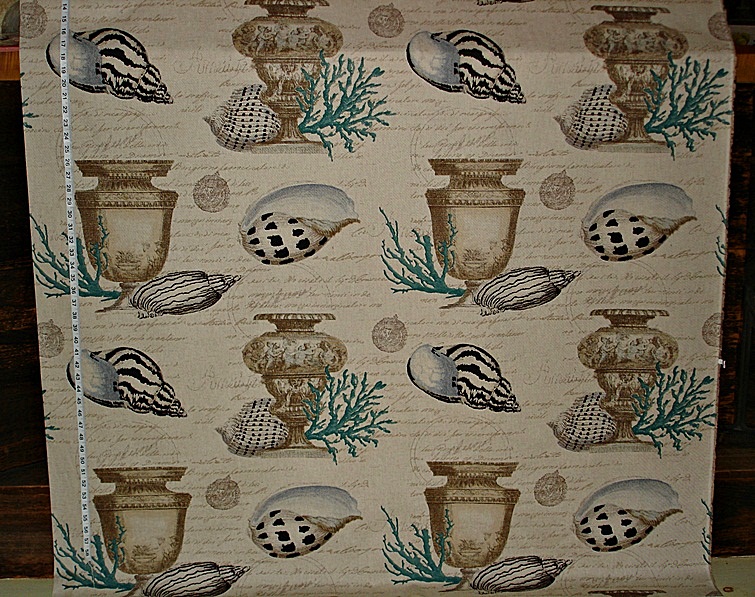
PKaufmann’s County Fair has the same set up, and one can easily see the issues. To get the whole design pattern, one needs to cut into the rows above and below one of the medallions And, again, the medallions on the edges do not have all of the design elements.
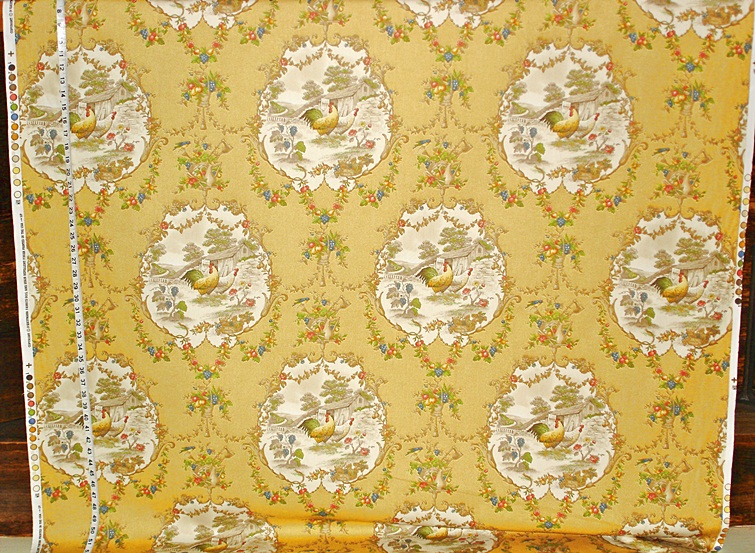
The Red Rooster Toile Fabric has a similar set up, but the scale of the pattern is smaller, and it is possible to get two full vignettes next two each other, so it is much easier to use with less fabric waste for projects.
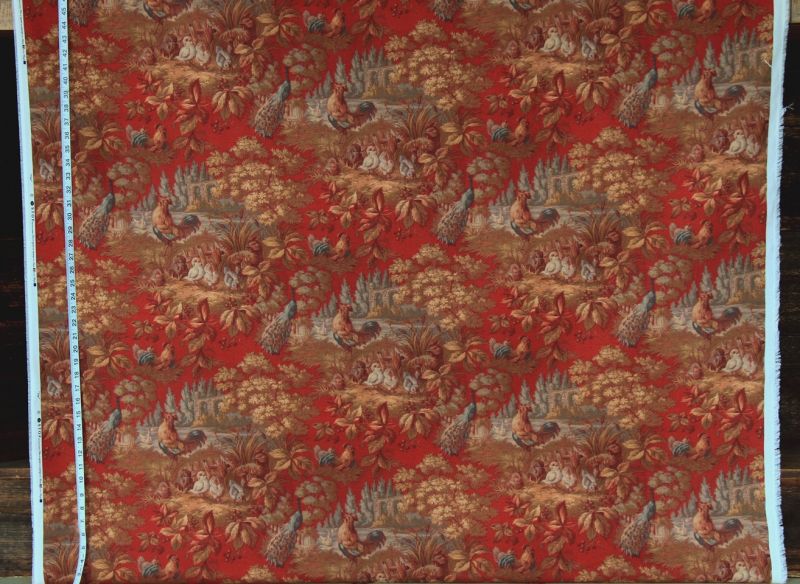
So, when choosing fabric for a project really look at the full fabric. You want to see the full width of it, and you want to see the design set up and placement before making a decision on whether it will work for you.
Think about more than subject and color. Also think about how the fabric will need to be used to get the effect that you want for your project.
For all of the patterns see the
Fabric Categories at
_______________________________
